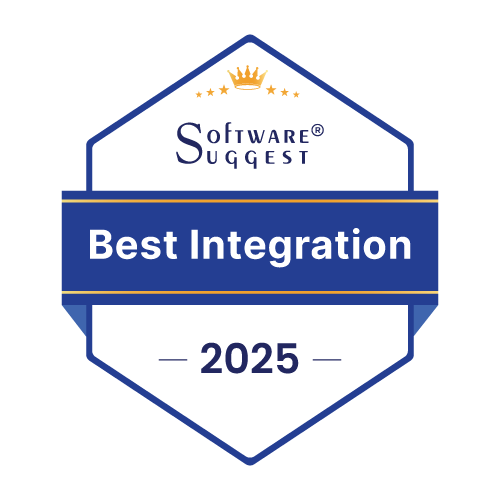Introduction: The Evolving Retail Landscape
The retail industry in India is undergoing a massive transformation. From traditional neighborhoodkirana stores to expansive supermarkets and hypermarkets, consumer shopping habits are evolving. With digitalization, economic shifts, and changing consumer preferences, a crucial question arises:
Which retail model-General Trade or Modern Trade-holds the future?
Understanding the strengths, challenges, and evolving nature of both formats is essential for retailers, brands, and business owners looking to stay competitive in the ever-changing retail market. In this blog, we’ll analyze both models, compare their impact, and explore what the future holds.
Understanding General Trade: The Backbone of Indian Retail
How General Trade Operates
General Trade (GT), also known as traditional trade, refers to small, independent stores such as kirana shops, local grocery stores, and standalone retailers. These stores operate with a deep-rooted personal touch, offering credit-based purchasing and strong customer relationships.
Market Dynamics and Reach
1. Dominates Indian retail
GT still holds 70% of the market share in the Indian retail landscape.
2. Key to rural and semi-urban markets
It caters to the needs of consumers who prefer local, familiar shopping experiences.
3. Operates on trust and personalized service
Many customers rely on credit purchases, home delivery, and personal recommendations from store owners.
Key Sectors Benefiting from GT
1. FMCG (Fast-Moving Consumer Goods)
Products like daily essentials, snacks, and beverages rely heavily on GT.
2. Pharma & OTC Medicines
Local pharmacies play a crucial role in last-mile medical supply.
3. Household Goods & Essentials
From detergents to packaged foods, kirana stores remain a go-to for everyday needs.
Understanding Modern Trade: The Rise of Organized Retail
What is Modern Trade?
Modern Trade (MT) refers to large-format retail stores, including supermarkets, hypermarkets, and chain retail stores. These include players like D-Mart, Reliance Retail, and Big Bazaar, which have revolutionized shopping experiences by providing structured retail environments.
Digital Adoption in Retail
Modern Trade has embraced digital technology with:
1. Automated billing and self-checkout kiosks
2. Inventory management through AI and data analytics
3. Loyalty programs, discounts, and app-based engagement
Why Consumers Prefer Modern Trade?
1. Convenience
One-stop shopping experiences.
2. Better product variety
Wide range of brands, imported goods, and bulk discounts.
3. Promotions & Discounts
Seasonal offers and loyalty programs attract price-conscious consumers.
How Retailers Benefit
1. Higher profitability per transaction due to bulk sales
2. More efficient supply chain using digital tracking and forecasting tools
3. Expansion opportunities through brand collaborations and omnichannel strategies
| Factors | General Trade (GT) | Modern Trade (MT) |
|---|---|---|
| Market Share | 70% | 15% |
| Consumer Experience | Personalized service | Self-service, discounts |
| Technology Adoption | Low | High (AI, POS systems) |
| Supply Chain Efficiency | Fragmented distribution | Streamlined logistics |
| Pricing & Profitability | Price-sensitive | Bulk discounts & offers |
| Market Penetration | Rural & semi-urban | Urban & metro cities |
The Hybrid Trade Model: Best of Both Worlds?
Many businesses are blending GT and MT strategies to maximize their reach and profitability.
How Businesses Are Leveraging Both Models
1. FMCG brands use GT for deep market penetration while relying on MT for brand visibility and promotions.
2. Retail chains are integrating digital ordering systems to serve both local kirana shops and modern supermarkets.
3. D2C (Direct-to-Consumer) brands are entering both trade formats to optimize customer acquisition.
Omnichannel Strategies for FMCG & Retail Brands
Retailers are now adopting an omnichannel approach by combining GT’s personal touch with MT’s digital convenience. This includes:
1. WhatsApp-based ordering for local kiranas
2. Hybrid fulfillment models (Buy Online, Pickup In-Store - BOPIS)
3. AI-driven consumer insights to optimize both GT and MT operations
2025 & Beyond: What’s Next for General & Modern Trade?
The retail landscape is set to undergo major transformations with technological innovations and consumer behavior shifts.
Key Trends to Watch:
1. AI-Driven Supply Chains
Retailers will use predictive analytics for inventory management, reducing waste and optimizing stock levels.
2. D2C Disrupting Traditional Trade
More brands will bypass traditional retailers and sell directly via e-commerce and social commerce.
3. Hyperlocal Commerce Expansion
Q-commerce (Quick Commerce) platforms like Zepto&Blinkit will further reduce delivery times, affecting GT stores.
4. Sustainability-Driven Retail
Consumers will prefer brands with eco-friendly packaging, sustainable sourcing, and ethical supply chains.
Final Thoughts: Which One Should Your Business Focus On?
1. If your business relies on rural and semi-urban reach, General Trade remains crucial.
2. For scaling in urban regions with high-value transactions, Modern Trade is essential.
3. An omnichannel strategy combining both will yield the best long-term results.
The future of retail isn’t about choosing one model over the other. Instead, businesses must integrate both General Trade and Modern Trade, leveraging digital advancements, data analytics, and evolving consumer preferences to create a holistic retail strategy.
Understanding Indian Retail Industry: Market Trends and Consumer Preferences 2025
Are you a business owner, retailer, or entrepreneur looking to stay ahead in India’s dynamic retail industry? This blog will provide you with key insights into how the Indian retail market is evolving, what’s driving consumer preferences, and how you can leverage these trends to grow your business.
Whether you're a consumer or a business, understanding these shifts can help you navigate the changing landscape. By the end of this blog, you'll gain a deeper understanding of General Trade, Modern Trade, and emerging retail formats like e-commerce and quick commerce. More importantly, you’ll learn how to adapt your business strategy to meet evolving consumer demands and stay competitive in the market.
The Evolution of India’s Retail Industry
Trade in India has a deep-rooted history, dating back to traditional barter systems and ancient marketplaces. Over time, retail began to take shape through localized markets and small trade networks, eventually leading to the development of General Trade (GT) as the primary retail model. GT, consisting of small neighborhood stores, street vendors, and kirana shops, has long been the backbone of India's retail sector, catering to local communities with personalized service and credit-based purchasing options.
As India's economy evolved and consumer preferences shifted, Modern Trade (MT) emerged as a structured retail format alongside General Trade. This new format introduced large-format stores, supermarkets, and malls, offering shoppers a more organized and convenient shopping experience. With economic liberalization and globalization, Modern Trade in India began expanding, providing wider product assortments, promotional offers, and technology-driven operations.
At the same time, the rise of e-commerce and quick commerce further transformed retail dynamics, influencing consumer behavior with increased accessibility and convenience. Now, let’s take a closer look at how Modern Trade gained a foothold in India and started shaping the country's retail landscape.
The Rise of Organized Retail and Modern Trade
With economic liberalization in the 1990s, India witnessed the emergence of Modern Trade (MT) large-format stores, supermarkets, and shopping malls. As modern retail formats expanded, consumer behavior began shifting towards convenience, structured shopping experiences, and greater product variety, driven by urbanization and increasing disposable incomes.
Retail giants like Big Bazaar, Reliance Retail, and D-Mart introduced discount-based pricing, wide product assortments, and technology-driven operations, gradually shifting consumer preference towards organized retail formats.
As disposable incomes increased and urbanization expanded, consumers began prioritizing convenience, variety, and quality over traditional shopping habits. The availability of air-conditioned stores, self-service models, and promotional discounts further attracted urban shoppers, marking a shift in consumer behavior from relationship-based local shopping to experience-driven modern retail.
The Digital Boom: E-commerce and Quick Commerce
In the past decade, e-commerce has disrupted the traditional retail ecosystem. Platforms like Amazon, Flipkart, and Myntra have redefined shopping by offering convenience, competitive pricing, and doorstep delivery. More recently, Quick Commerce (Q-Commerce) players like Zepto and Blinkit have emerged, promising ultra-fast delivery of groceries and FMCG products within minutes.
Market Trends: Key Factors Shaping the Indian Retail Industry
As India's retail landscape rapidly evolves, businesses must keep up with key market trends to stay competitive. By understanding these shifts, retailers can make informed decisions about pricing, product offerings, and customer engagement.
Urbanization, digital transformation, and economic shifts are fundamentally reshaping consumer behavior. Rising disposable incomes, inflationary pressures, and the widespread adoption of digital payments are altering shopping patterns. As a result, businesses must stay agile, embracing new retail formats and innovative consumer engagement strategies to thrive in an increasingly competitive environment.
Market Share Breakdown (2024)
Retail market segmentation in India shows a significant divide between General Trade, Modern Trade, and emerging sectors like e-commerce and quick commerce. Below is the current market share distribution:
General Trade (GT)
Modern Trade (MT)
e-Commerce
Quick Commerce (q-Commerce)
Even with the rapid expansion of modern retail and e-commerce, General Trade remains the preferred choice for millions, thanks to its deep-rooted presence in rural and semi-urban regions.
Consumer Preferences: What Drives Purchase Decisions?
Consumer behavior has evolved significantly in recent years. The following factors influence where and how Indian consumers shop:
Comparison of Consumer Preferences in Different Retail Formats
| Factors | General Trade (GT) | Modern Trade (MT) |
|---|---|---|
| Price Sensitivity | 40% | 25% |
| Product Variety | 15% | 50% |
| Personalized Service | 30% | 10% |
| Convenience | 10% | 15% |
| Discounts & Promotions | 5% | 25% |
Key Insights:
1. Price Sensitivity
General Trade thrives in price-sensitive markets where bargaining and credit sales play a crucial role.
2. Product Variety
Modern Trade appeals to consumers looking for a diverse range of products, including international brands.
3. Personalized Service
GT stores maintain strong relationships with local customers, offering trust and familiarity.
4. Discounts & Promotions
MT retailers attract urban consumers with bulk discounts, loyalty programs, and seasonal offers.
Future Trends in the Indian Retail Industry
Retail Business Opportunities in India
1. The Rise of Omnichannel Retail
Businesses are integrating online and offline shopping experiences, offering flexibility to consumers.
2. Technology-Driven Retailing
AI, data analytics, and automation are enhancing inventory management, customer insights, and supply chain efficiency.
3. Sustainability & Ethical Consumerism
Growing awareness about eco-friendly products and sustainable packaging is influencing purchase behavior.
4. Direct-to-Consumer (D2C) Growth
Brands are bypassing traditional retail channels to sell directly to customers via online platforms.
Businesses that capitalize on these trends will be better positioned to stay competitive in India’s evolving retail landscape.
Retail’s Next Chapter: Embracing Change and Growth
The Indian retail market is undergoing rapid transformation, balancing traditional and modern formats while adapting to new digital trends. While General Trade continues to dominate, Modern Trade and E-commerce are gaining traction, especially in urban areas.
To summarize the key takeaways:
1. General Trade remains strong, particularly in rural and semi-urban regions, due to trust-based relationships and price sensitivity.
2. Modern Trade is expanding, offering structured shopping experiences, wider product variety, and promotional benefits.
3. E-commerce and Quick Commerce are reshaping consumer expectations, emphasizing speed, convenience, and digital-first approaches.
4. Future growth lies in omnichannel strategies, technological integration, and sustainability trends that cater to evolving consumer preferences.
Businesses that embrace technology, innovation, and omnichannel strategies will be best positioned to grow and adapt to changing consumer expectations.




